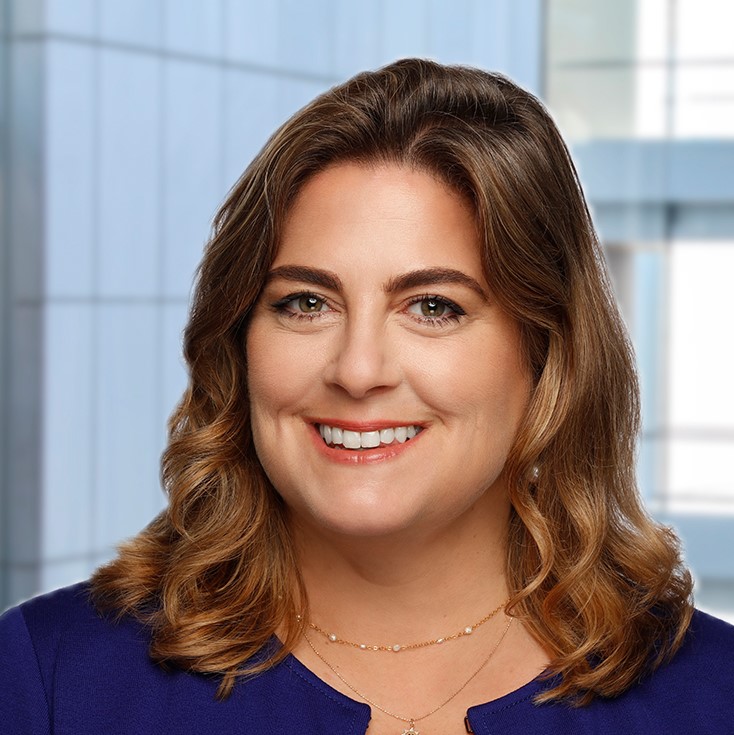
In the latest in our series, Portfolio Adviser hears from PGIM Investments International head Kimberly LaPointe (pictured right)
Which asset classes and strategies do you anticipate intermediary clients focusing on in 2022?
The three trends we continue to see accelerate into 2022 are income, thematics and ESG – which dominates nearly every client meeting. These trends are led by client demand, as opposed to product development – driven by the growing needs of today’s demographics of investors, from retirees to millennials.
Income is a key theme for many investors, amid a prolonged environment of low interest rates across most developed markets. Investors continue to search for income, while paying attention to wealth preservation. For the coming months and beyond, we are focused on building our high yield offering, as well as product development of our existing strategies in the US that can be packaged in UCITS, to meet the ongoing demand for income among cross-border fund investors.
While thematic funds are not new to investors, Covid-19 has increased the demand, as we look to capture the opportunities created by long-term structural trends in society and the economy. We are seeing significant demand for thematic funds from private banks and independent wealth managers. There has been interest in investing in technology themes such as artificial intelligence, next-generation and disruptive tech, and cybersecurity.
At PGIM, we believe we are well positioned to meet this theme – earlier this year we launched the PGIM Jennison NextGeneration Fund, managed by our active growth equity manager, Jennison Associates. Our NEXT (Next EXceptional Technologies) Economy suite of funds, PGIM Jennison Global Equity Opportunities Fund and PGIM Jennison Emerging Market Equity Fund also meet this growing client demand.
Finally, ESG continues to be a key focus for investors. Actively managed funds have continued to dominate when it comes to investing based on ESG factors. This year, our focus has been on launching and transitioning our fixed income suite to represent the strength of our ESG capabilities across our fund range. Earlier this year we launched the PGIM Global Total Return ESG Bond Fund and PGIM Global Corporate ESG Bond Fund.
Should end-investors – and, by association, asset managers – be thinking beyond equity and bond investments? Towards what?
While still early, we anticipate heightened access to private investment vehicles, as client demand has increased for alternative asset classes – such as real estate, private debt and equity and liquid alternatives. Investors are starting to rethink traditional 60/40 portfolios, as we have seen positive correlations between the two asset classes. Also, as mentioned earlier, in an environment where investors are looking for income, certain alternatives can provide an opportunity for more predictable sources of income.
“The key to remaining competitive as an active manager is simple – deliver investment strategies that are outperforming and price them efficiently”
Given client and regulatory pressure on charges, how is your business delivering value for money to intermediaries and end-clients?
In the past, pricing was considered 30% of alpha – now it is index plus. We anticipate this shift downward will continue. Fee pressure will ultimately result in a barbell effect on portfolios. At one end, investors will look for lower cost passive/low alpha solutions, and at the other, they will be prepared to pay for high-performing active managers. The key to remaining competitive as an active manager is simple – deliver investment strategies that are outperforming and price them efficiently – and that is our focus at PGIM.
How much of your distribution is currently oriented towards ESG issues and sustainable investing? How do you see this evolving?
Our distribution and product strategy centres on meeting the needs of clients, by providing local expertise and relevant product solutions, which have a global scale. ESG is incredibly important as an asset manager and fiduciary, and each of our managers makes its own investment decisions, which is a key component of PGIM’s multi-manager model. Each business is fully empowered to do what it believes to be the right thing for its clients, and this includes the approach to ESG.
ESG continues to be an important focus for us and our clients – it is therefore at the forefront of our product innovation and thought leadership. Earlier this year we launched two ESG fixed income strategies – the first in a suite of ESG fixed income funds we plan to expand on in the coming months. You can expect to see us launch more ESG dedicated funds across various asset classes, as we continue to enhance our capabilities across all of PGIM’s active managers.
In what ways do you think the experience of lockdown has permanently affected or changed the asset management sector?
Lockdown has led to a massive acceleration of many of the trends we see in other industries around technology, hybrid working and outsourcing of non-core functions. What has remained constant is talent – the importance of people and culture remain critical to asset management success.
“There is nothing like an in-person meeting to foster collaboration and co-creation of new investment solutions”
How do you plan to balance face-to-face and virtual distribution? Have you identified aspects where one is especially better (or worse) than the other?
Both in-person and virtual have a place in the new normal. There is nothing like an in-person meeting to foster collaboration and co-creation of new investment solutions. With more mature relationships, virtual meetings can be an efficient way to host portfolio updates, enabling portfolio managers to have more time managing assets.
What are your plans for the Christmas break?
I am looking forward to an extended holiday back in New York with my family. I have children living on both sides of the pond, with two at University in the US and two here in the UK. This makes our time together more precious and will definitely include hours of competitive Rummikub.
What aspects of your own lockdown routine do you expect to continue with as people migrate back to office-working?
Lockdown has reminded me of the importance of connecting with nature. I plan to continue to take my dogs on long walks through many of London’s beautiful parks.
More generally, what are you expecting from ‘the new normal’?
Very early in my career, someone said to me: “Kimberly, the only constant in this industry is change. If you learn to embrace change, you will be successful.” It is now 20 years later, and I lean on this advice often as a reminder of the importance of being resilient, agile in my thinking, and to manage my expectations.










